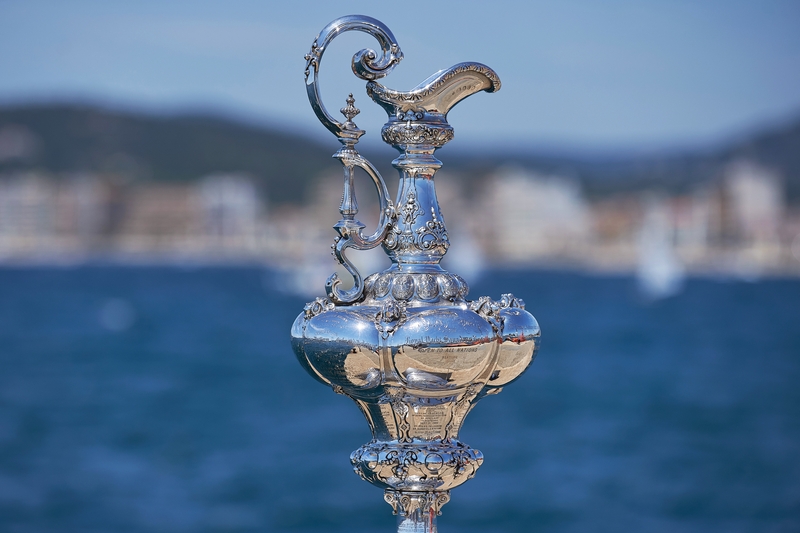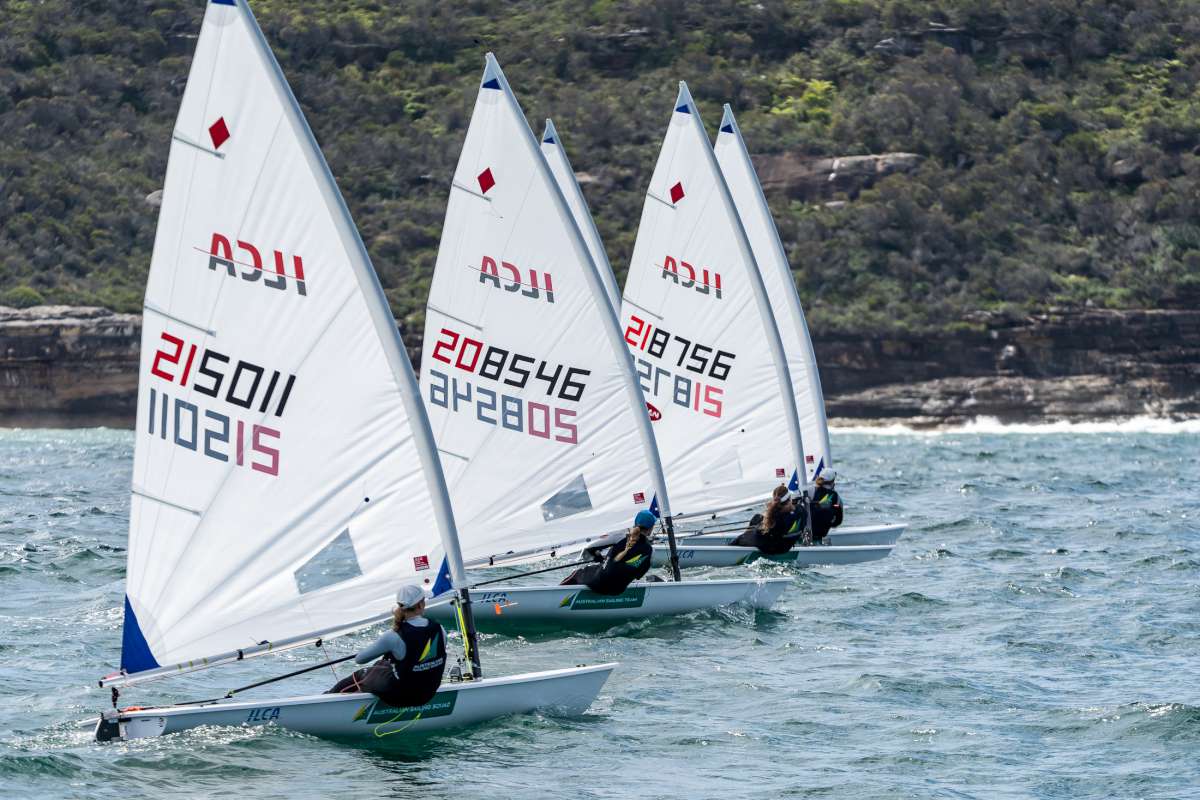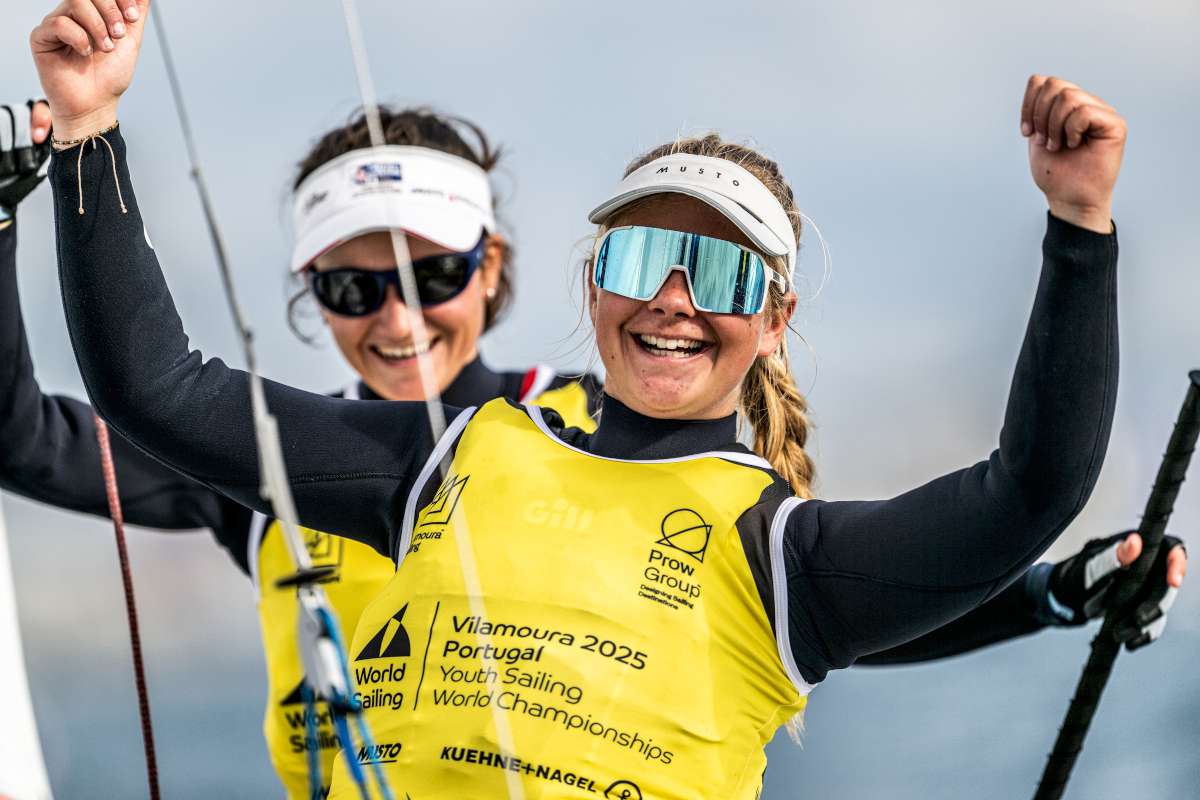As we count down to the 35th America's Cup in Bermuda, the defender and four of the five challengers have reached a number of decisions aimed at improving the commercial return for sponsors and/or reducing costs for the teams. The outlier has continued to be Team New Zealand, who criticise the democratic decisions that go against their views of how the Cup should be run.
Oracle Team USA boss Russell Coutts, the most successful America's Cup sailor in history, has finally had enough of the carping from his country of birth and has fired back. On Saturday morning (Australian time) he posted the following on Facebook:
It appears the silly season has once again arrived, driven by a select few in the media who seem to find it difficult to separate fact from fiction, or research… a balanced story, for the benefit of their readers.
In particular, the so called reporting from Dana Johannsen of the NZ Herald often lacks both accuracy and balance and it’s for this reason that many people usually dismiss her articles.
However this week Dana Johannsen wrote of “naked self interest” and “self serving rules changes” in an attempt to explain why ORACLE TEAM USA would be racing in the Louis Vuitton America’s Cup Qualifiers, so I feel compelled in this instance to respond and point out at least some of the follies in her story telling.
Dana seems to have forgotten that Emirates Team New Zealand actually wanted the same Qualifiers racing in New Zealand where ORACLE TEAM USA would have raced against all other teams, just as they are doing in Bermuda!
In reality, history would in fact suggest that it’s very difficult to accurately predict who this joint racing might eventually benefit, and it certainly isn’t a new feature that the Defender could race or practice against a Challenger.
In 1987, Kiwi Magic trained against the Defender, Kookaburra, just prior to the America’s Cup finals. The Defender would go on to lose. However, in 1992 the Defender refused to sail against the Challengers and successfully defended the Cup. Then in 1995, the Defender adopted the same strategy and lost.
In 2000, as a New Zealand Defender, we were open to sailing against the Challengers but only the Nippon Challenge accepted our offer. In hindsight the Challengers may have benefitted more from racing us than we did from racing them, because the result ended 5-0 in favour of Team New Zealand.
Then, prior to the 2003 America’s Cup, Team New Zealand refused to sail against all Challengers, believing they were faster with their ‘hula’. Of course, history proved otherwise when Alinghi then won 5-0. So, prior to the 2007 final races, Emirates Team New Zealand did in fact race against Alinghi and the result was closer, although they still lost the final match 5-2.
It would therefore seem to be somewhat ridiculous, and perhaps bordering on arrogant, to assume that racing against the defending champion would somehow favour the Defender. The reality is that it might and it equally might not.
Now let’s explore the real reason why the new rules were written to mandate that all teams must race against each other, and if Dana had done even a small amount of research or made a few calls to other teams to actually fact check her story, she might have drawn a more reasonable and logical conclusion.
In past America’s Cups, we’ve seen both Challengers and the Defender build two boats capable of in house racing and for the most part train in isolation for years, resulting in an arms race that was expensive, inefficient and provided almost no commercial benefit to the team sponsors during those training periods.
In particular, the Defender would typically gear up with two fully fledged sailing teams, which they had to fund for 3-4 years.
This time, to avoid that arms race and to provide more commercial exposure and value for all teams and their sponsors, it was decided to involve all teams in racing.
After all, the current Defender is from the USA, which of course is a market of major promotional interest to almost all sponsors involved in the America’s Cup. So this year, all teams get to race against the US Defender in two televised races each, and benefit from the media coverage generated. In the past, only one of the top challengers would have raced against the Defender (in the final races) and the media return for almost all other teams, apart from the eventual Challenger, provided poor results. Sponsors received poor value and walked away from the Cup.
It also works for the Defender, in that the sponsors of ORACLE TEAM USA will also gain valuable additional exposure in countries like France, Japan, Sweden, the UK and New Zealand.
Most of the teams seem to want that, whether they are a Challenger or Defender in the future, and I am pretty sure that should New Zealand win this edition, its sponsors, including the New Zealand government, would likely wish for the same!
This new format has saved every team a lot of unnecessary cost and will provide a greater exposure for all.
All teams have built only one boat, even ORACLE TEAM USA, the team that Dana Johannsen says is acting out of self interest. All teams have fewer staff and therefore less cost as a result of the new rules. It is a win – win for everyone. For example, ORACLE TEAM USA has reduced its staff by approximately a third, compared with AC 34. ETNZ, despite promoting themselves as an underfunded, small team, actually has one of the largest and best resourced outfits, currently with a listed staff of 96. Even this is still considerably less than the numbers they had in San Francisco.
And while Team New Zealand complains about the rules being decided by majority vote, I would suggest that such a democratic process is far better than the old system where the Defender and its elected Challenger of Record decided all the rules.
To be clear, New Zealand has actually voted in favor of the majority of the rules changes in this current campaign, although they are not shy in criticizing the same process that has served their self interest well, on the few occasions when the democratic vote has gone against them.
This America’s Cup also marks the very first time in over 166 years of history, where the regatta management is truly independent. America’s Cup Race Management (ACRM) is wholly-owned and equally funded by each of the teams. ACRM is responsible for everything that happens on the field of play, for all regatta officials, umpires, and race committee decisions.
The commercial arm of the America’s Cup, ACEA, is however controlled by the Defender who also has to underwrite the risk. Some of those event commercial rights were shared with other teams that hosted venues and yes, like all other teams, ETNZ was offered the chance to host an America’s Cup World Series event in New Zealand which they declined.
When I compare the current structure, with an independent ACRM, led by the respected Iain Murray, controlling all competitive aspects, to when the America’s Cup was last in New Zealand, it was a very different scenario. The race committee for the Match was from the defending club, the Royal New Zealand Yacht Squadron. That race committee decided when to race and when not to race whereas ACRM have a fully automated wind measuring system and the rules mandate racing must be when the wind is between 6 and 25 knots.
It is also worth noting that in many of the past America’s Cups, even the international jury was elected by the host club!
This new arrangement, where the teams have equal voting power and equally fund the race management operations, is a massive step forward for the America’s Cup in terms of good governance, even if the vote occasionally goes against the wishes of one team.
In that respect, it’s clear from Team New Zealand’s recent social media posts that they are determined to forge a lonely path against the consensus of the rest of the America’s Cup community, which includes the teams and all current event sponsors.
Five teams have laid out a framework for the future, which has been developed by consensus, widely supported by all current event sponsors, built from expert advice from all over the world, from some of the most respected, experienced individuals from business as well as sport. It aims to lay a solid commercial and sporting foundation for what happens next. Continuity, consistency and clarity are important features to all stakeholders. Creating a commercially sustainable America’s Cup is a must for the benefit of the many, and the sport as a whole, not just the few.
While it’s certainly the right of Team New Zealand to have an alternative view, I have to ask, “What is it?”, because they certainly haven’t shared it with any of the current teams and despite being given every opportunity to do so on multiple occasions, they have refused to even engage with the process.
Do they favour a return to a format where most of the teams don’t return enough value to their sponsors? Do they prefer a format where there is only racing at the final venue? Do they have a vision at all? If so, and if they successfully win this Cup, how do they propose to make that work commercially for visiting teams, because it certainly didn’t work when the America’s Cup was previously hosted in New Zealand.
Surely this constant bickering isn’t the way forward, or at least that’s the view of five of the other current teams and investors and let’s face it, most of them have a relatively successful track record of running sustainable businesses!
While the plucky underdog story is a powerful marketing tool for Team New Zealand in its home market, we’d like to believe it could be deployed without pulling down the reputation of the other competitors and the event.
The reality is that not only are Emirates Team New Zealand backed by multiple billionaires, but they continue to receive millions of dollars of NZ Government funding. In addition to the $5 million of taxpayer funds paid to the team by the NZ Government in late 2013, the team can draw down up to $15 million of further government funding under the Callaghan Innovation scheme.
Whilst I will always promote strong competition on the water, there is nothing wrong with competitors cooperating commercially off it, to ensure the event gets on a better commercial footing for the future.
We continue to remain hopeful that whilst Emirates Team New Zealand may have different views on many aspects, they will nevertheless embrace the America’s Cup with a positive attitude, for what promises to be a compelling, competitive and memorable event starting on May 26th in Bermuda.


























